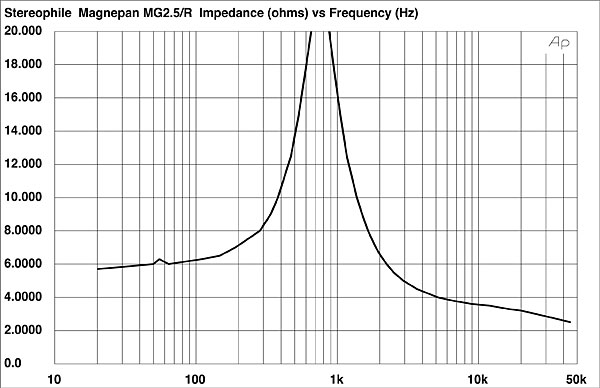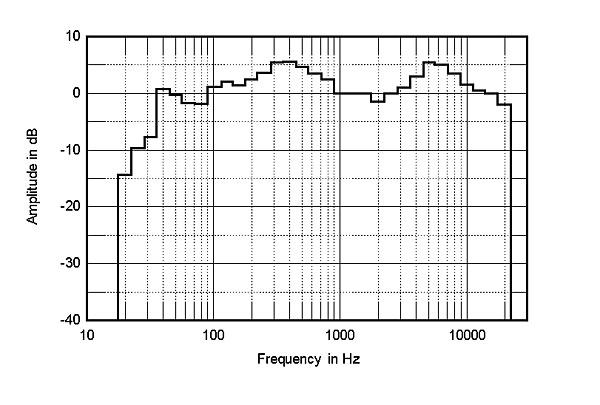| Columns Retired Columns & Blogs |
to the time I had a pair of these with the same Linn but using a DNM/3 with a pair of Marantz MA6's (Sonder current limiting).
Good times.
The frequency response of each speaker was measured in the listening window—spatially averaged to minimize room standing-wave problems—using a 1/3-octave warble-tone generator, which is said to be a little more analytical than the filtered pink-noise signal I have used in the past; in addition, the nearfield low-frequency response of each speaker was measured with a sinewave sweep to get an idea of the true bass extension relative to the level at 100Hz. The change of impedance with frequency and the voltage sensitivity (using 1/3-octave pink noise centered on 1kHz) were also measured.
Voltage sensitivity was slightly lower than average at about 85dB/W/m (1kHz 1/3-octave band). Amplifiers of less than 50W output will probably not drive the speakers to high enough levels except in small rooms. Looking at the modulus of impedance (fig.1), the MG2.5 behaves pretty much as a 5–6 ohm resistor below the lower midrange and as a 3–4 ohm resistor in the treble. Between these values, a broad peak reaches a value of 22 ohms at 750Hz. In general, though it will demand more current than an 8 ohm resistor with music having high levels of bass and treble, the 2.5 should be pretty easy to drive. One thing that should be mentioned is that the impedance levels off at 2.5 ohms at 45kHz and above. You should check that your amplifier is not liable to go into ultrasonic oscillation with your chosen cables if hit with highish levels in this frequency region, produced, say, by the tip-mass resonance of a Monster Alpha 2 or Clearaudio cartridge amplified by a non-bandlimited phono preamplifier. Most dynamic speakers don't require a lot of current in this region, but the low load presented by the MG2.5s to an amplifier already having stability problems could prove troublesome. Check with your dealer if you are worried about your amplifier in this regard.

Measured in the nearfield, in the center of the planar-magnetic driver, the low-frequency response was a little uneven, presumably due to room effects. The 6dB-down point lay at a rather high 50Hz, but the bass sounded commendably free from distortion and doubling—after all, the radiating area of the woofers in a pair of MG2.5s is equivalent to three 12" cone drivers. Spatially averaged in-room with the speakers having their tweeters on the inside edges (fig.2), the bass rolled off rapidly below 40Hz, but was very clean, apart from some obvious room effects (dipole speakers being harder to interface with the room at low frequencies than box speakers). The response was smooth through the midrange, if peaking somewhat in the 315Hz and 400Hz 1/3-octave bands, while the entire treble region, from 1kHz upward (the region handled by the tweeter), was a little depressed compared with the midrange, on average shelved down by some 3dB. The extreme HF just went on up, only 2dB down at 20kHz, and with a commendable lack of peakiness.

With laterally disposed drive-units and what are basically first-order crossover slopes, some horizontal beaming is to be expected. Looking at the response some 15° or so off-axis on the tweeter side of the speaker, a broad suckout developed between 800Hz and 2.5kHz, reaching a maximum of 4dB deep relative to the 1kHz level, while 15° off-axis on the woofer side gave a rather narrower 4dB suckout centered on the 2kHz band. There was also too much midrange energy off-axis on the woofer side in the 315Hz, 400Hz, and 500Hz bands. These off-axis responses obviously contributed to the nature of the spatially averaged room-response plot shown in fig.2, and will make tricky matters of positioning the speakers with respect to nearby surfaces and deciding on the optimum toe-in.
Above the lower treble, the response held up well either side of the main axis, showing that the tweeter has wide dispersion. In relatively narrow rooms, this may result in a rather bright treble balance, even though the on-axis response is quite flat. In such a situation, replacing the jumper with a low-value power resistor will equalize the subjective treble balance.—John Atkinson

to the time I had a pair of these with the same Linn but using a DNM/3 with a pair of Marantz MA6's (Sonder current limiting).
Good times.